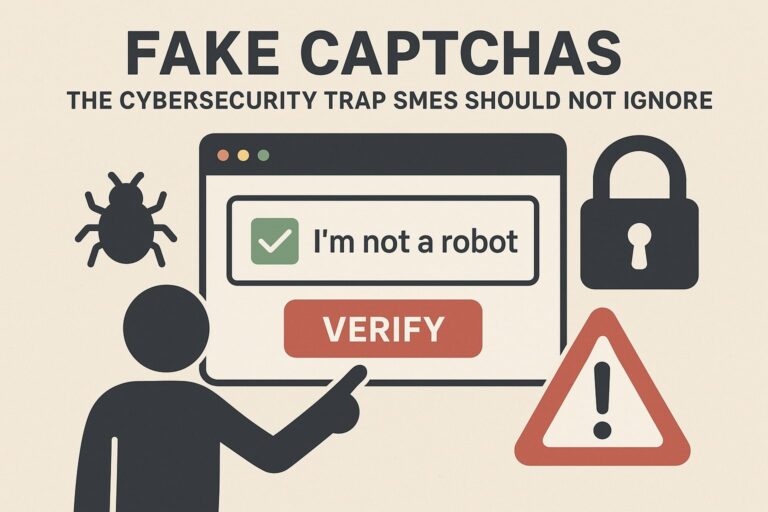In the ever-evolving landscape of cybersecurity, threat actors are constantly finding new methods to deceive individuals and organizations. One such emerging threat is quishing, a variation of phishing that exploits QR codes to compromise systems and steal sensitive information. While phishing via email and SMS is widely recognized, quishing remains under the radar for many, making it an attractive vector for cybercriminals.
What is Quishing?

Quishing (QR phishing) is a type of phishing attack that leverages QR codes to deceive users into visiting malicious websites or downloading harmful software. Much like traditional phishing, the goal is to trick the victim into providing sensitive information such as usernames, passwords, or even financial details. The difference lies in the delivery method: instead of clicking on a malicious link, the victim scans a QR code that directs them to a phishing website.
How Quishing Works
Here’s a typical scenario of how a quishing attack might unfold:
- The Setup: A threat actor creates a malicious website that mimics a legitimate service (e.g., a bank, cloud storage service, or login page).
- QR Code Generation: The attacker generates a QR code that encodes the malicious URL, hiding the website link behind a seemingly innocent square of black and white patterns.
- The Bait: The attacker distributes this QR code through various channels—emails, social media, posters, business cards, or even physical mailers. In some cases, these QR codes are placed on compromised legitimate websites or public spaces.
- The Victim’s Interaction: A user scans the QR code using their smartphone, often without thinking twice, as QR codes have become increasingly common and are seen as convenient tools for sharing information.
- The Attack: Once the QR code is scanned, the user is redirected to a phishing website or a page that prompts them to download malware. If the user submits their credentials or downloads a file, the attacker gains unauthorized access to their data.
Why Quishing is Effective
Quishing thrives because of the inherent trust users place in QR codes. With the rise in contactless transactions, digital menus, and mobile-first experiences, people are conditioned to scan QR codes quickly and without suspicion. Moreover, unlike URLs in emails or SMS, QR codes do not give users any immediate visual cues about the destination. This allows attackers to mask their intent much more effectively than in traditional phishing.
Some factors contributing to quishing’s effectiveness include:
Lack of Awareness: Many people are unaware of the potential risks posed by scanning QR codes, especially in contexts where the codes appear legitimate (e.g., a poster from a familiar brand).
Ease of Distribution: QR codes can be printed, sent digitally, or even placed in public spaces, allowing attackers to cast a wide net with little effort.
Mobile Devices as Targets: Smartphones, which are the primary devices used for scanning QR codes, often have less robust security measures compared to desktops. Additionally, users tend to be more trusting and less vigilant on mobile devices, making them easy targets for attacks.
Real-World Examples of Quishing

Though quishing is a relatively new attack method, it has already been observed in various sectors:
- Hospitality Industry: In 2022, reports surfaced of cybercriminals placing malicious QR codes on restaurant tables, disguised as digital menus. Unsuspecting patrons scanned the codes and were directed to fake websites that stole payment information.
- Parking Meters: In several cities, criminals have placed fraudulent QR codes on parking meters. People trying to pay for parking were instead redirected to phishing sites that collected their payment card details.
- Email Campaigns: Quishing has also been seen in phishing emails where attackers use QR codes to bypass traditional email filters that flag suspicious URLs. Recipients are more likely to scan the code because email security software may not recognize it as malicious.
Protecting Against Quishing Attacks
To mitigate the risks posed by quishing, individuals and organizations should take the following steps:
- Verify Before You Scan: Always inspect the source of a QR code before scanning it. If it’s from an unfamiliar sender or is displayed in a questionable location (e.g., a random flyer), proceed with caution.
- Use QR Scanners with Previews: Some QR scanner apps or smartphone features provide a preview of the URL before directing users to the site. Enable this feature to help identify malicious links.
- Look for HTTPS: Even after scanning a QR code, pay attention to the website’s URL. If it doesn’t start with “https” or looks suspicious, exit immediately.
- Educate Employees and Users: Organizations should implement training programs to inform staff about the dangers of quishing and other phishing tactics. Awareness is a key defense against such threats.
- Enable Multi-Factor Authentication (MFA): Even if credentials are stolen in a quishing attack, MFA can prevent unauthorized access to sensitive accounts by requiring an additional form of verification.
- Use Anti-Phishing Software: Advanced anti-phishing tools can help identify and block malicious websites, even if accessed via QR codes.
- Check for Tampered QR Codes: In physical locations, be wary of QR codes that appear to have been tampered with. Attackers may place fake stickers over legitimate QR codes to mislead users.
As cybercriminals continue to innovate, it’s important to remain vigilant about emerging threats like quishing. While QR codes offer convenience, they also present an opportunity for attackers to exploit unsuspecting users. By understanding how quishing works and adopting the right security practices, individuals and organizations can significantly reduce the risks associated with this growing cyber threat.
Cybersecurity is an ever-changing field, and staying informed is the best way to stay secure. Have you encountered any suspicious QR codes recently? Let us know in the comments and share your experiences!





